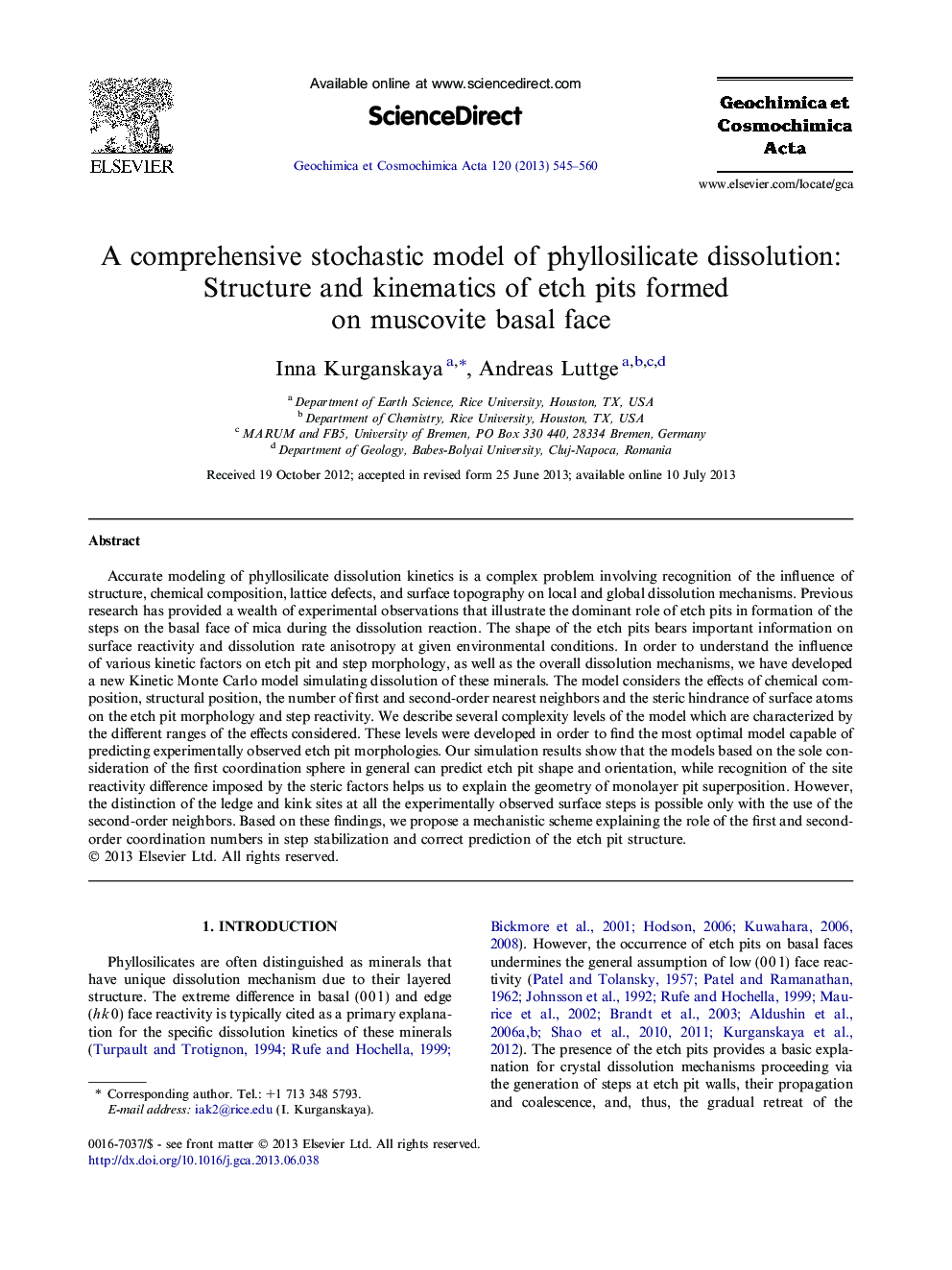| Article ID | Journal | Published Year | Pages | File Type |
|---|---|---|---|---|
| 6439030 | Geochimica et Cosmochimica Acta | 2013 | 16 Pages |
Abstract
Accurate modeling of phyllosilicate dissolution kinetics is a complex problem involving recognition of the influence of structure, chemical composition, lattice defects, and surface topography on local and global dissolution mechanisms. Previous research has provided a wealth of experimental observations that illustrate the dominant role of etch pits in formation of the steps on the basal face of mica during the dissolution reaction. The shape of the etch pits bears important information on surface reactivity and dissolution rate anisotropy at given environmental conditions. In order to understand the influence of various kinetic factors on etch pit and step morphology, as well as the overall dissolution mechanisms, we have developed a new Kinetic Monte Carlo model simulating dissolution of these minerals. The model considers the effects of chemical composition, structural position, the number of first and second-order nearest neighbors and the steric hindrance of surface atoms on the etch pit morphology and step reactivity. We describe several complexity levels of the model which are characterized by the different ranges of the effects considered. These levels were developed in order to find the most optimal model capable of predicting experimentally observed etch pit morphologies. Our simulation results show that the models based on the sole consideration of the first coordination sphere in general can predict etch pit shape and orientation, while recognition of the site reactivity difference imposed by the steric factors helps us to explain the geometry of monolayer pit superposition. However, the distinction of the ledge and kink sites at all the experimentally observed surface steps is possible only with the use of the second-order neighbors. Based on these findings, we propose a mechanistic scheme explaining the role of the first and second-order coordination numbers in step stabilization and correct prediction of the etch pit structure.
Related Topics
Physical Sciences and Engineering
Earth and Planetary Sciences
Geochemistry and Petrology
Authors
Inna Kurganskaya, Andreas Luttge,
